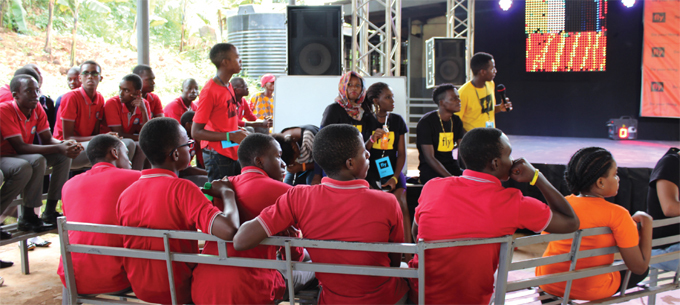FLY motivates teens to fight tobacco use
Fly is teen empowerment program funded by the Bill and Melinda Gates Foundation under their Tobacco control CSR arm. It is facilitated by Good Business, a consultancy in the UK and delivered by Scanad and Reach a Hand Uganda, in Uganda.
Being a teen in this digital era comes with boundless pros and cons. It opens up new opportunities and ways to learn more about life and careers than it was in our grandparents' generation.
However, it also brings challenges, such as the availability and pressure to use tobacco. With that in mind, Fly, a teen's community programme helps teenagers to express themselves, stay true to the right choices and grow their confidence.
A Platform for self-expression
Amon Mulyowa, a parent to a teen and peer educator with Reach A Hand Uganda, one of the facilitators of this programme, explains that Fly gives teens a platform to express themselves and say no to things they don't want, especially tobacco use.
"When teens are focused on the things that matter, it is easy for them to steer clear of things that threaten to hold them back," he notes. By helping teens celebrate what they love to do, Fly is building a confident, ambitious and tobacco free generation. Fly also desires to see more empowered teens who feel part of a community and have a greater resilience against tobacco.
 Fly encourages the teens to do their thing which in turn develops their unique talents. These can be used to benefit their communities
Fly encourages the teens to do their thing which in turn develops their unique talents. These can be used to benefit their communities
Empowering teens to say no and focus on their passions
According to Mulyowa, Fly aims at creating a tobacco free environment by empowering them to say no themselves. It aims at promoting a community of teens who believe in themselves, are motivated and have positive attitude.
"We want teens to individually identify their passion and potential and in that same way, we encourage them to stay committed to what is their thing and shake off what they have identified as not their thing," he elaborates.
Reaching out to teens
Fly asks teens "What their thing Teens dancing to the Fly anthem at Equator College Nateete recently. The organisation works to empower young people to be a positive influence in society is and what their thing isn't". Fly encourages them to think about what is important to them and what does not serve them.
It values what teens think and gives them a platform to share this with the world. It helps them put into practice what they are dreaming about and show them role models in line with their dream. Fly encourages teens to be positive about achieving what they want to be in future no matter what it takes.
Fly reaches out to teens through programmes such as Fly days at the schools and hangouts within the communities. The Fly days are school outreach programmes led by Reach a Hand Uganda where teens are engaged in activities such as literature, dance, music, board games, challenges, quizzes and mentorship that help teens to build their confidence and self-expression In the recent past the teens have also been engaged through radio and TV programs using content generated by the teens.
Akram Ssali, a teenager who has participated in Fly says that Fly has given him a platform to express himself, realise who he is and exploit his full potential. This in turn fosters discipline and focus in school and life in general. According to Fly, the top ‘my thing' according to teens are: singing, dancing, sports, photography and writing. And the top ‘not my thing' as expressed by most teens is using tobacco - shisha, cigarettes, kuber - , fighting, and gossiping.
Pressure to use tobacco
Dr Sheila Ndyanabangi, the national focal person for tobacco control at the health ministry notes that many teens are faced with a challenge of availability and pressure to use tobacco. Tobacco comes in many forms which are made appealing to teens such as shisha as well as kuber which is easy to hide.
On the other hand, the pressure to use it comes from advertising images in media, from peers and from the need to stand out from the crowd or fit in with your peers. CLICK HERE FOR MORE ON THIS STORY